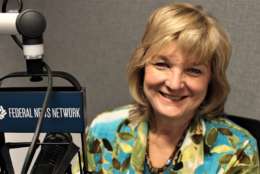Mike Causey
-
Last month the Thrift Savings Plan implemented a series of changes in withdrawal rules it hopes/expects will lead to more people leaving their investments in the TSP when they leave government.
October 12, 2019 -
Federal workers and retirees are awash in numbers today, some solid, some still forming up. The final total will determine in large part what kind of financial future they have.
October 11, 2019 -
There were 5.6 million accounts in the TSP at the end of September. A few were just born in the right family but the majority are self-made.
October 10, 2019 -
Fast approaching is the health benefits open enrollment period from Nov. 11-Dec. 9, when workers and retirees should shop carefully for the best deal for them and their families.
October 09, 2019 -
It's very likely, especially if you haven’t changed plans in the past few years or are retired, that you are paying more in premiums than necessary.
October 08, 2019 -
While people are fascinated by the TSP Millionaires Club, the real question is where does your account rank in value?
October 07, 2019 -
Nobody likes to pay more for anything. But is it possible that the Federal Employee Health Benefits Program isn’t the ripoff many think it is?
October 04, 2019 -
So how’s the retirement nest egg you’re building one paycheck at a time going?
October 03, 2019 -
Washington, D.C. area tax and estate attorney Tom O’Rourke has tips for finding out the state of your estate, and planning for the future.
October 02, 2019 -
The reason for the new shutdown decision deadline is that lawmakers have not approved appropriations to keep all federal agencies operating after Oct. 1.
October 01, 2019 -
Federal-military-Social Security retirees are hoping for a January 2020 cost of living adjustment, which is nice but not as nice as the days of 8% or 9% yearly increases.
September 30, 2019 -
Most of the 34,000 active and retired feds with million-dollar-plus Thrift Savings Plan accounts got there by keeping cool. Most have been steady investors for decades.
September 27, 2019 -
Senior Correspondent Mike Causey asked long-time reader Tony Krolik if there is life after retiring, which he did from the Internal Revenue Service five years ago.
September 26, 2019 -
As the year grows closer to an end, federal employees will be eager to see just how much their pockets will be impacted.
September 25, 2019 -
Monday’s column got the attention of a lot of readers, especially those at the top step of the top grade — GS-15. Unfortunately, says Mike Causey, the explanation was mostly wrong.
September 24, 2019















